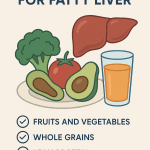Cancer has long been one of the most challenging diseases to treat, due to its complexity, variety of types, and ability to adapt and resist traditional treatments. But the emergence of targeted therapy has ushered in a new era in oncology—one that is precise, personalized, and promising. This article explores in depth how targeted therapy is revolutionizing cancer treatment, offering renewed hope to millions worldwide.
Understanding the Basics of Targeted Therapy
Targeted therapy is a form of cancer treatment that uses drugs or other substances to precisely identify and attack cancer cells without harming normal cells. Unlike chemotherapy, which attacks all rapidly dividing cells (cancerous or not), targeted therapy focuses on specific molecules and pathways involved in cancer growth, progression, and survival.
This breakthrough approach is often referred to as “precision medicine” because it tailors treatment based on the genetic makeup of both the patient and their cancer. Through this lens, cancer is no longer treated as a one-size-fits-all disease.
The Science Behind Targeted Therapy
At its core, targeted therapy works by interfering with molecules involved in the development and spread of cancer. These molecules, often proteins or genes, act as the engines or control centers of cancer cells.
Targeted therapy may:
- Block the signals that tell cancer cells to grow or divide
- Trigger the immune system to destroy cancer cells
- Prevent new blood vessels from forming, cutting off the tumor’s nutrients
- Deliver toxins directly to cancer cells through antibody-drug conjugates
One remarkable feature of targeted therapy is its mechanism of selectivity—it can distinguish cancerous cells based on their unique genetic mutations, making the therapy more effective and reducing side effects.
Types of Targeted Therapy
Targeted therapies fall into several broad categories, each with a unique mode of action.
Monoclonal Antibodies
These lab-engineered proteins attach to specific targets on cancer cells. Some mark the cancer cell for destruction by the immune system; others block signals essential for cancer cell survival.
Small Molecule Inhibitors
These drugs enter cells and interfere with molecules involved in cancer cell signaling. For instance, tyrosine kinase inhibitors block enzymes that promote cell division.
Angiogenesis Inhibitors
By blocking the formation of new blood vessels, these therapies effectively starve tumors.
Immune Checkpoint Inhibitors
Although more often categorized under immunotherapy, some checkpoint inhibitors are highly targeted and prevent cancer cells from hiding from immune attacks.
How Genetic Testing Fuels Targeted Therapy
Genetic testing plays a crucial role in determining if a patient is a candidate for targeted therapy. By sequencing the DNA of cancer cells, doctors can identify biomarkers or mutations that are actionable—meaning there’s a drug that can specifically target them.
Common examples include:
- HER2 overexpression in breast cancer
- EGFR mutations in non-small-cell lung cancer
- BRAF mutations in melanoma
- ALK gene rearrangements in lung cancers
If a mutation is present and a therapy exists for it, patients are often fast-tracked for that specific treatment. This biomarker-driven approach has transformed oncology into a more data-informed field.
Personalized Medicine: Cancer Treatment by Design
One of the most revolutionary aspects of targeted therapy is its personalized approach. In traditional oncology, patients with the same cancer type might receive identical treatments. But targeted therapy recognizes that even among patients with the same cancer, no two tumors are genetically alike.
Doctors now develop treatment plans based on:
- Tumor genetic profile
- Patient’s overall health
- Previous responses to treatment
- Specific cancer subtypes
This personalization not only increases treatment success rates but also enhances the patient’s quality of life by reducing unnecessary toxicity.
Advantages Over Traditional Chemotherapy
Targeted therapy offers several key advantages that are driving its rapid adoption:
- Fewer Side Effects: It spares normal cells, leading to reduced nausea, hair loss, and fatigue.
- Higher Efficacy: Because it homes in on cancer’s specific mechanisms, it often works better.
- Longer Remission Periods: Targeted drugs can sometimes suppress cancer for extended durations.
- Combination Potential: Targeted therapy works well when combined with immunotherapy, radiation, or chemotherapy.
It’s not to say that targeted therapy is without side effects, but they tend to be more manageable and predictable than those of traditional chemotherapy.
Success Stories and Notable Examples
Numerous examples highlight how targeted therapy has dramatically improved patient outcomes.
Imatinib (Gleevec) revolutionized the treatment of chronic myeloid leukemia (CML), turning it from a fatal disease into a manageable chronic condition.
Trastuzumab (Herceptin) transformed the outlook for women with HER2-positive breast cancer, drastically improving survival rates.
Osimertinib has extended life for patients with EGFR-mutant non-small cell lung cancer.
These therapies didn’t just improve survival—they changed the entire trajectory of cancer care for these individuals.
Challenges and Limitations
Despite its promise, targeted therapy faces several significant challenges:
Resistance Development
Cancer cells are clever. Over time, they can mutate to become resistant to targeted drugs. In such cases, the therapy that once worked may lose effectiveness.
Limited Targets
Not all cancers have identifiable targets. Some are too genetically complex, or their mutations don’t yet have corresponding drugs.
High Costs
Targeted therapy can be prohibitively expensive, especially without insurance coverage or in low-resource settings.
Accessibility and Equity
Availability varies significantly by region, and patients in rural or underserved areas may not have access to genomic testing or specialized care.
These limitations emphasize the need for ongoing research, more inclusive clinical trials, and global healthcare infrastructure improvements.
Targeted Therapy in Pediatric Oncology
While most research and approvals initially focused on adult cancers, targeted therapy is now making strides in pediatric oncology as well.
Children with rare cancers or treatment-resistant tumors are benefitting from therapies like larotrectinib for NTRK gene fusions and dabrafenib for BRAF-mutant tumors.
The impact is profound—offering families treatment options that didn’t exist just a decade ago.
Emerging Trends in Targeted Therapy
The future is dazzlingly bright for targeted therapy. Several innovative directions are shaping the next generation of treatments:
Multi-target Drugs
New drugs can now hit multiple cancer pathways at once, reducing the risk of resistance.
Artificial Intelligence in Drug Design
AI is helping scientists design more effective targeted agents by predicting how cancer cells will behave.
Liquid Biopsies
These simple blood tests detect tumor DNA, helping monitor treatment response and emerging mutations in real time.
Combination Therapies
Researchers are exploring synergies between targeted therapy, immunotherapy, and even vaccines for cancer.
CAR-T Cell Therapies
Though a form of immunotherapy, some CAR-T therapies are designed to target specific cancer proteins, merging the best of both worlds.
Targeted Therapy: The Patient Perspective
From the patient’s point of view, targeted therapy brings hope with fewer trade-offs. Stories abound of people returning to work, enjoying life, and managing their cancer like a chronic condition.
Still, education is key. Patients need to understand:
- Their eligibility for targeted therapy
- Potential side effects
- How to navigate genomic testing
- Available clinical trials
The more informed the patient, the more empowered the outcome.
Conclusion: A Paradigm Shift in Oncology
Targeted therapy has moved cancer treatment from a sledgehammer to a scalpel. It’s no longer about just killing cancer cells—it’s about outsmarting them.
We’re living in a time when medicine doesn’t just treat disease but understands it at its deepest molecular level. Though challenges remain, the trajectory is clear: targeted therapy is transforming cancer from a death sentence to a manageable, even beatable, condition.
As research progresses, more cancers will become targetable, more treatments will become affordable, and more lives will be saved.
FAQs
Targeted therapy attacks specific molecular targets on cancer cells, while chemotherapy affects all rapidly dividing cells, leading to more side effects.
It can lead to remission or significantly slow disease progression, but in most cases, it’s used to control cancer rather than cure it completely.
It can be used alone or in combination with chemotherapy, immunotherapy, or radiation, depending on the cancer type.
Genetic testing of your tumor is required to determine if you have actionable mutations or biomarkers.
Generally, it has fewer side effects than chemotherapy, but some patients may experience fatigue, skin issues, or liver problems.
Advances in AI, liquid biopsies, and combination treatments are expanding possibilities and making therapy more precise.








Post a comment